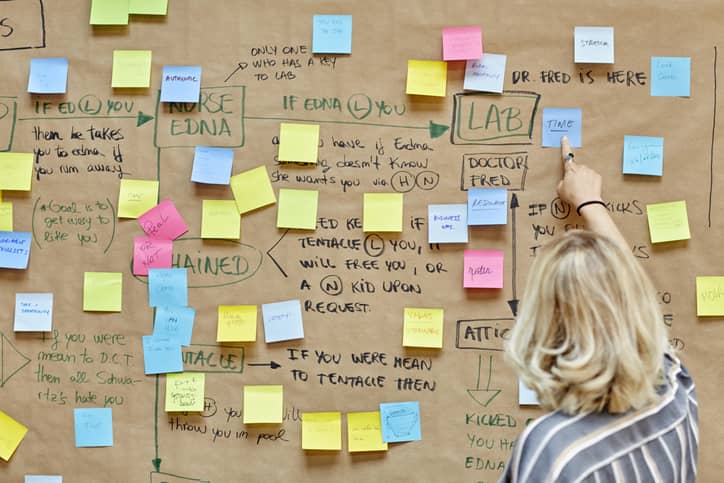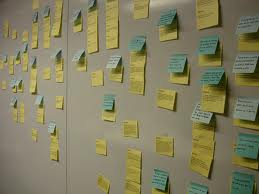Project teams use an affinity diagram as a better way to solicit, record and discuss ideas that will solve operational challenges. Its primary goal is to take all ideas for problem solutions and group them with similar ideas. This helps teams combine ideas and come up with better solutions. While teams primarily use affinity diagrams when brainstorming with a large group, they also use them to sort any large data set, such as responses to a customer survey.
Teams use affinity diagrams in the Define phase of DMAIC and typically work along the following steps. Before starting, teams keep ideas focused by writing a clear, concise sentence that sums up the problem they need to solve. A strong facilitator, such as a Six Sigma Black Belt, often led these brainstorming sessions.
Step 1: Everyone submits ideas about the root causes of the problem and what they think can solve the issue. The facilitator writes down each idea on a separate Post-It note. The team accepts all ideas without criticism or judgment.
Step 2: The facilitator groups similar ideas together and the team comes up with headings for each group. They eliminate duplicate ideas. This step sometimes takes place in silence, not allowing team members to make arguments for or against any grouping.
Step 3: The team then discusses the various groupings, promoting those they think will work and discarded those the majority thinks will not work. Some ideas get moved around into different groups if the majority agrees. The team also combines ideas to come up with even better solutions.
Later in the process, the team uses Six Sigma tools to validate whether the ideas will work. But with the affinity diagram tool, the idea is to quickly generate as many good ideas as possible.


